A Gentle Guide to Calendula Varieties
— planting light, naming pain, blooming anyway
Some flowers don’t just grow in the garden. They grow inside us.
For me, Calendula was never just a flower. It was an invitation.
A golden, unassuming presence that taught me how to tend to things I once neglected—my softness, my slowness, my need for quiet blooming.
In a world that often rewards the sharpest edges, Calendula arrives with sun-colored petals and says,
“What if you could be tender and still survive?”
This guide is for the gentle rebels, the weary hearts, the women learning to bloom on their own terms.
🌿 1. Calendula officinalis: The Healer
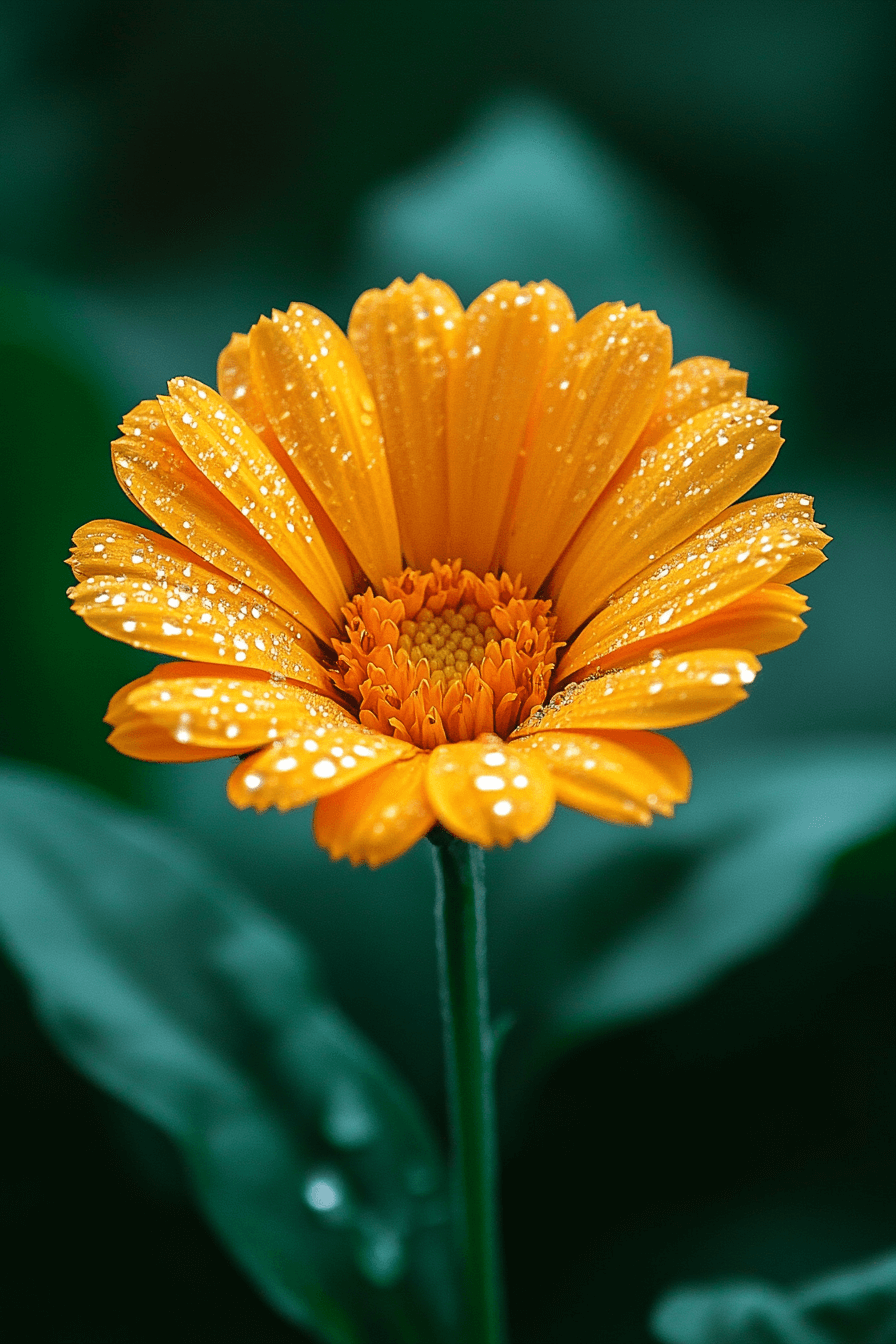
This is the witch-flower, the balm-maker’s favorite.
Calendula officinalis has lived in the pouches of midwives, in the jars of grandmothers, in the cups of the heartbroken.
Its golden-orange blooms are packed with anti-inflammatory magic, making it perfect for salves, teas, and healing oils.
But more than its herbal use, it carries emotional wisdom: you are allowed to be wounded and worthy at once.
I remember a summer when my hands trembled from burnout. I steeped Calendula petals in warm water, and it felt like being forgiven. Not by someone else—but by myself.
Care Tip: Prefers full sun and well-drained soil. Deadhead spent blooms regularly to encourage continuous flowering.
🌼 2. Pacino Series: Small Joys Matter
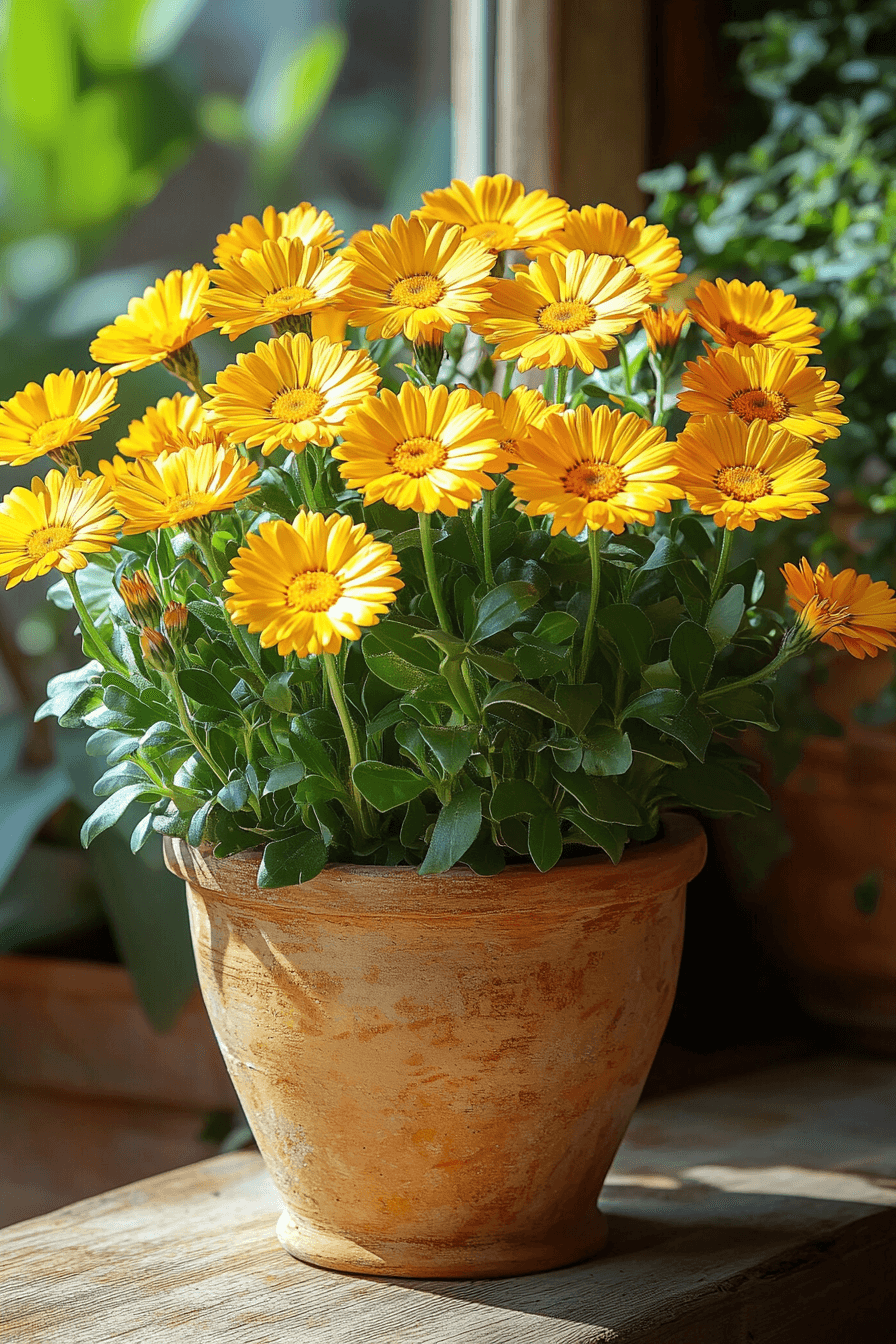
Tiny, cheerful, and full of life—Pacino Yellow and Pacino Orange are the little sisters of the garden.
They bloom low, sweetly, in pots and borders, needing little space to shine.
They remind me of the overlooked parts of myself—the playful girl who once picked petals just to watch them fall, the one who still believes in miracles at the windowsill.
Pacino didn’t just grow in my garden. She laughed there.
Care Tip: Thrives in containers; water moderately and avoid waterlogging. Great for small balconies or patios.
🍓 3. Strawberry Blonde: Softness With Edges
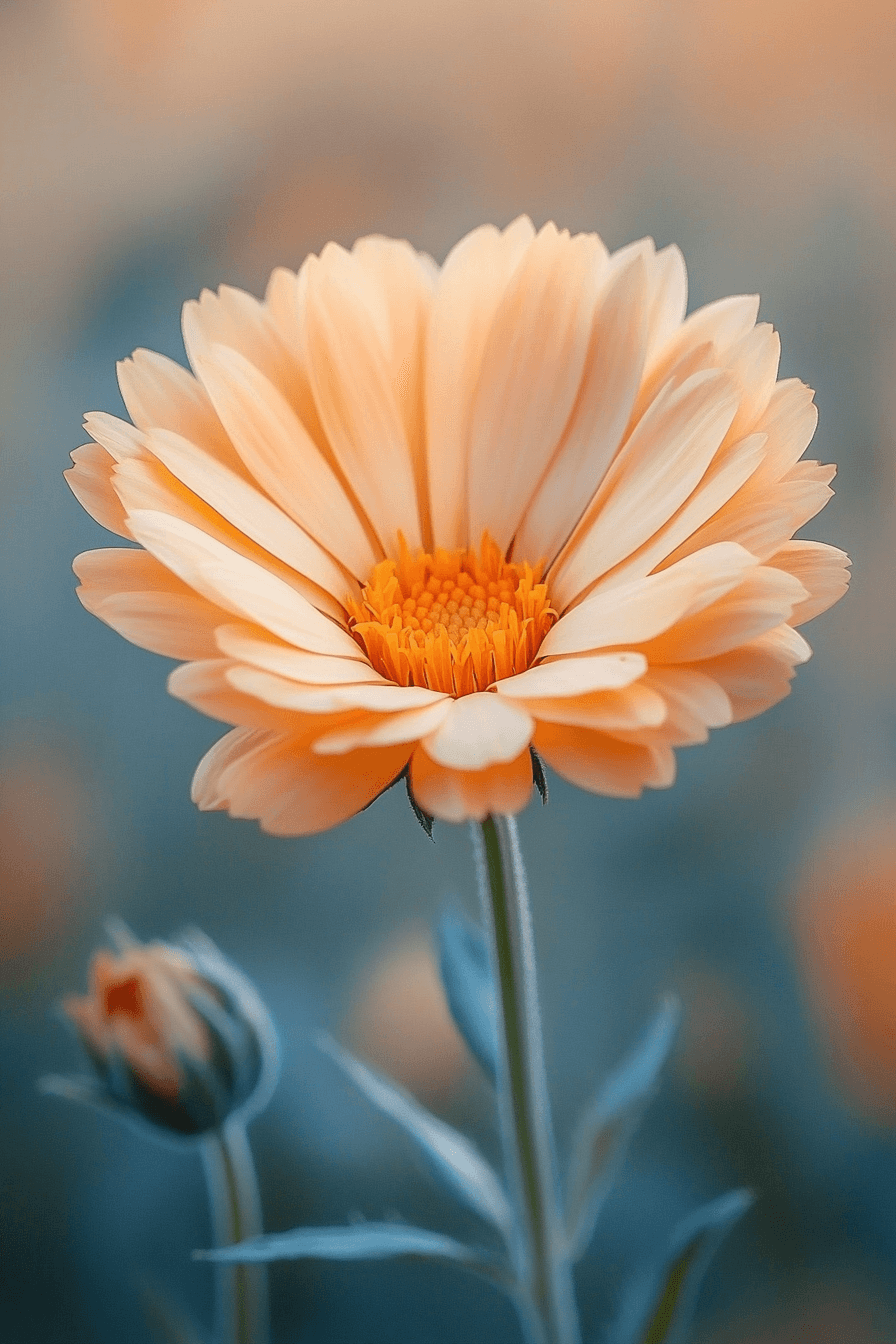
This one feels like a secret. Dusky rose, blush apricot, and gold—all on a single bloom.
A quiet symphony of colors, like a heart that’s been cracked open and healed in layers.
I planted Strawberry Blonde after walking away from something that once defined me. Her blooms were a promise: You can be soft, and still walk away.
Care Tip: Prefers light, airy soil and regular deadheading to maintain bloom quality.
🍑 4. Apricot Gem: Warm as a Memory
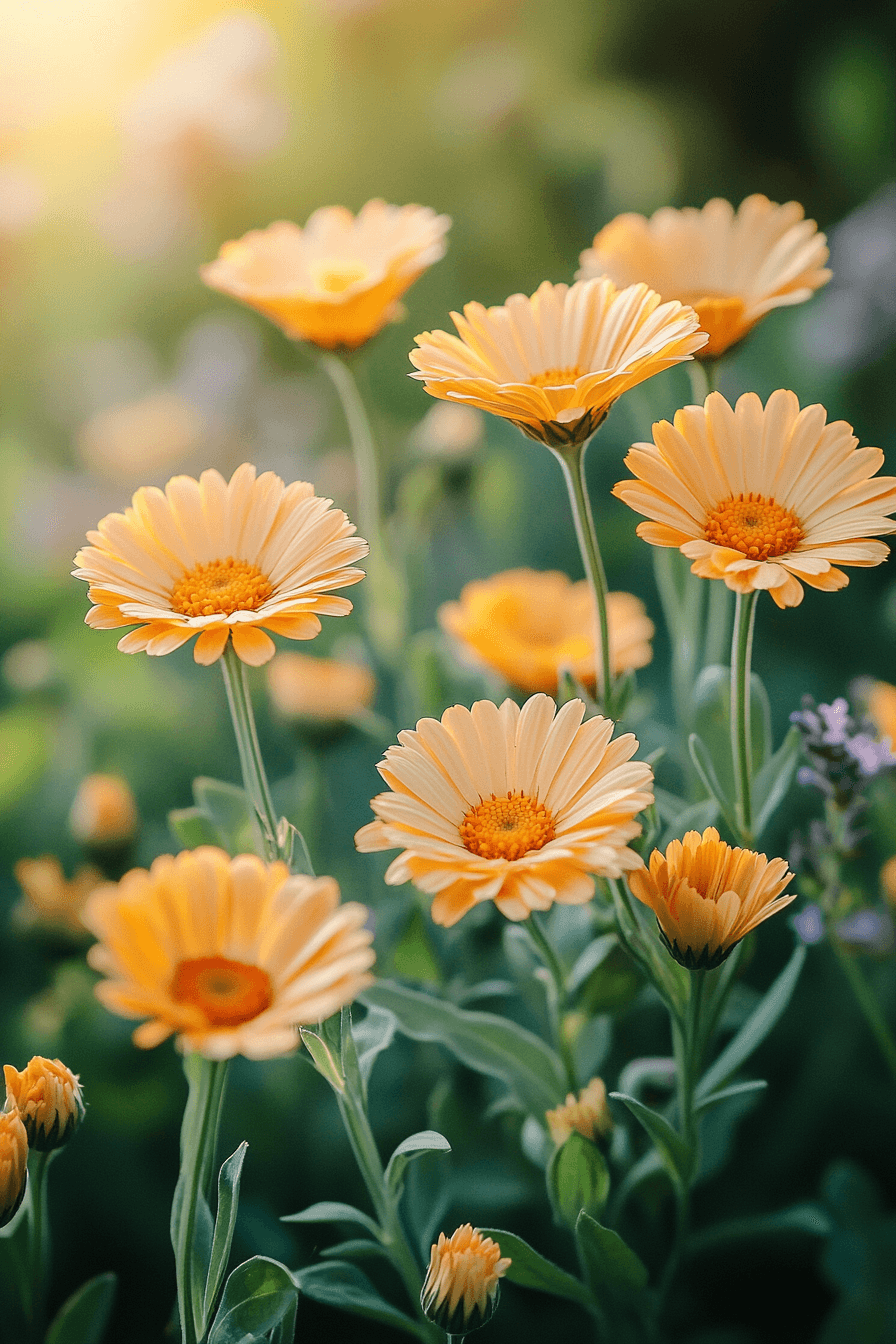
Apricot Gem carries the color of late-summer light and deep acceptance.
She’s the flower that leans toward companionship, best paired with lavender or lemon balm—plants that soothe the nervous system and anchor the breath.
When the world asks too much, Apricot Gem says, “rest anyway.”
Care Tip: Plant near companion herbs; ensure moderate watering and good air circulation to avoid mildew.
🔥 5. Flashback: I Am Not Small
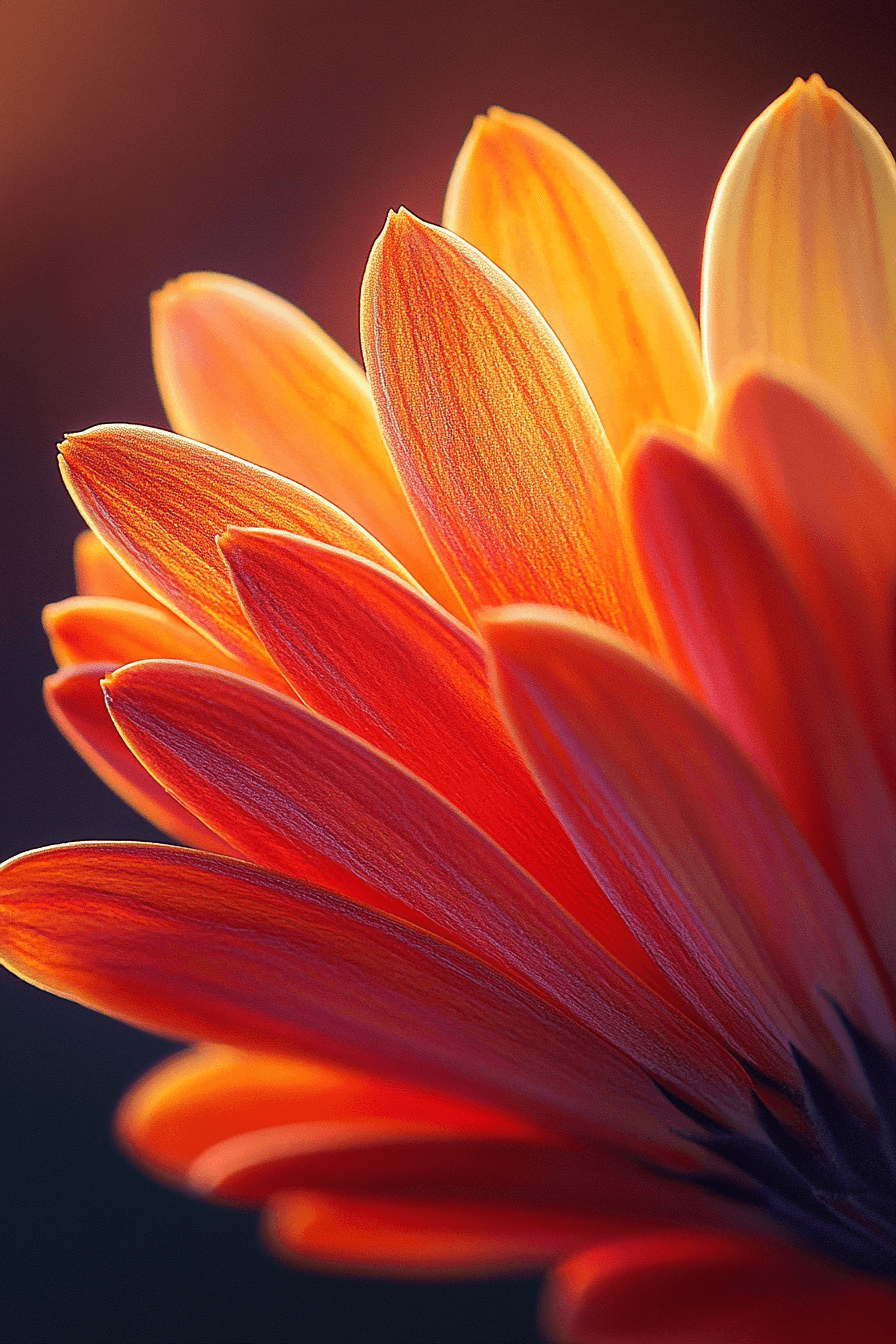
Flashback is fire. Her petals are orange edged in red, like someone who’s no longer afraid to speak her truth.
I planted her after leaving a life that no longer felt like mine. Every bloom was a declaration: I am allowed to take up space.
Some flowers don’t whisper. Some roar, and in doing so, give you permission to do the same.
Care Tip: Needs full sun and regular deadheading. Watch for aphids and treat gently with insecticidal soap if needed.
🌞 6. Bon Bon Mix: Celebration in Color
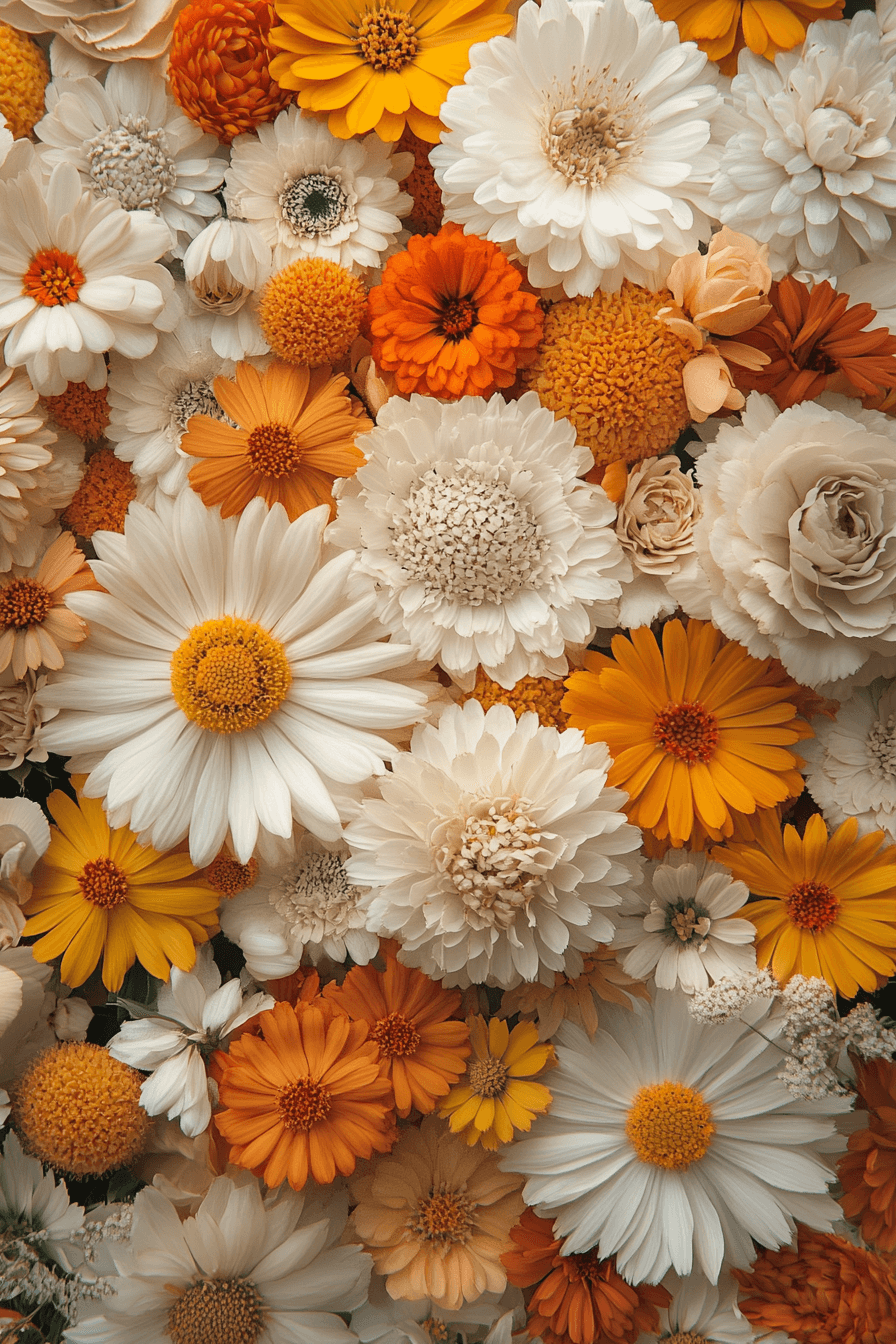
Bon Bon Mix is a chorus—gold, cream, orange, tangerine.
They rise like laughter from the soil. They don’t compete; they coexist.
It’s the variety I plant when I want to remind myself of abundance, of the joy in community, of women who water each other and rise anyway.
Care Tip: Ideal for mixed beds and containers; keep soil moist but not soggy. Deadhead to prolong bloom time.
🌸 Calendula, as Feminine Myth
Each variety, to me, is more than a plant. She is an archetype. A mirror of womanhood:
- Officinalis: the healer
- Pacino: the childlike joy
- Strawberry Blonde: the survivor who still loves
- Apricot Gem: the nurturer
- Flashback: the wild voice
- Bon Bon: the communal bloom
Gardening her is not just an act of cultivation. It is devotion—to ourselves, and to all the selves we are becoming.
🌿 Growing Calendula: A Soft Practice
- ☀️ Sun: Full sun
- 🌱 Soil: Well-drained, not too rich
- 💧 Water: Moderate; let top soil dry
- 🌼 Season: Spring to fall with regular deadheading
- ✂️ Harvest: Mornings yield stronger fragrance
- 🤝 Companions: Basil, chamomile, lavender, thyme
💬 FAQ: Common Questions About Calendula
Q1: Which Calendula is best for skincare and teas?
A: Calendula officinalis is the top choice—used for its anti-inflammatory and healing compounds in oils, salves, and tisanes.
Q2: Will Calendula grow well in pots?
A: Yes. Varieties like Pacino and Bon Bon Mix thrive in containers and balcony gardens.
Q3: Can I eat Calendula flowers?
A: You can! The petals are edible and often used to garnish salads or infuse herbal vinegar and oils.
Q4: Are they good for pollinators?
A: Very much so—Calendula attracts bees and beneficial insects, making it a gentle warrior in any organic garden.
Q5: What emotional benefits does Calendula offer?
A: It offers visual warmth and symbolic healing. Calendula represents the slow return to self after loss, fatigue, or change.
🌺 Final Petal Thoughts
Some days, you may feel small.
You may question your softness in a world of thorns.
On those days, I hope you remember: even the gentlest flower rises through soil.
Plant Calendula—not just in your garden, but in your life. Let her teach you that tenderness is power. That blooming quietly is still blooming. That light returns, always.
With soil under my nails and softness in my chest,
Jojo Len
— caretaker of quiet beauty, gardener of untamed hearts
🌸 Keep Wandering Through the Garden
- A Gentle Guide to Lavender Varieties: Perfect Choices for Balcony, Aromatherapy & Garden Bliss
- Five Tender Sunflowers for Small Gardens & Big Feelings
- A Gentle Guide to 8 Classic Rose Varieties & Care Tips for Slow Living Gardeners
- A Gentle Guide to Cosmos: Three Varieties for Joyful, Wild Gardens
- Gentle Blossoms: A Zinnia Guide for Your Soulful Garden
- A Gentle Guide to Marigold Varieties
- A Gentle Guide to Petunia Varieties
- A Gentle Guide to Pansy Varieties: Faces of Resilience
- A Gentle Guide to Viola Varieties
- A Gentle Guide to Tulip Varieties
- A Gentle Guide to Lily Varieties
- A Gentle Guide to Chrysanthemum Varieties
- A Gentle Guide to Calendula Varieties
👉 Explore more at jojolen.shop
- Pinterest: @GrowandGathertogether | Instagram: @jojolen6666
- Images © jojolen.shop — credit if shared. No commercial use without permission.
